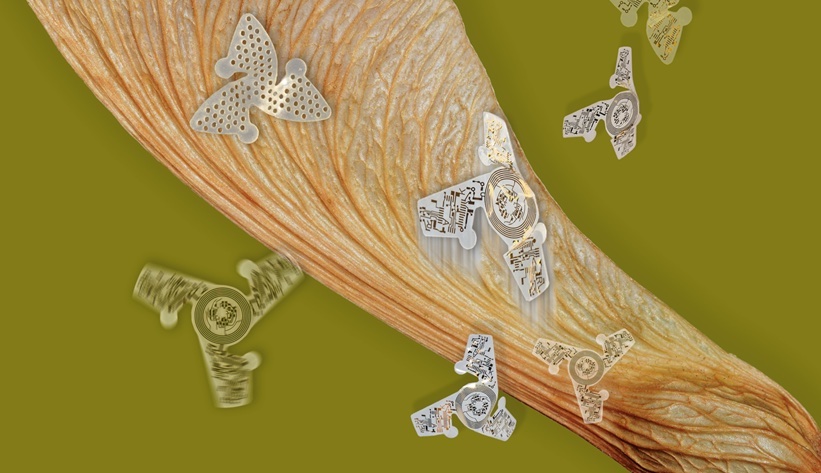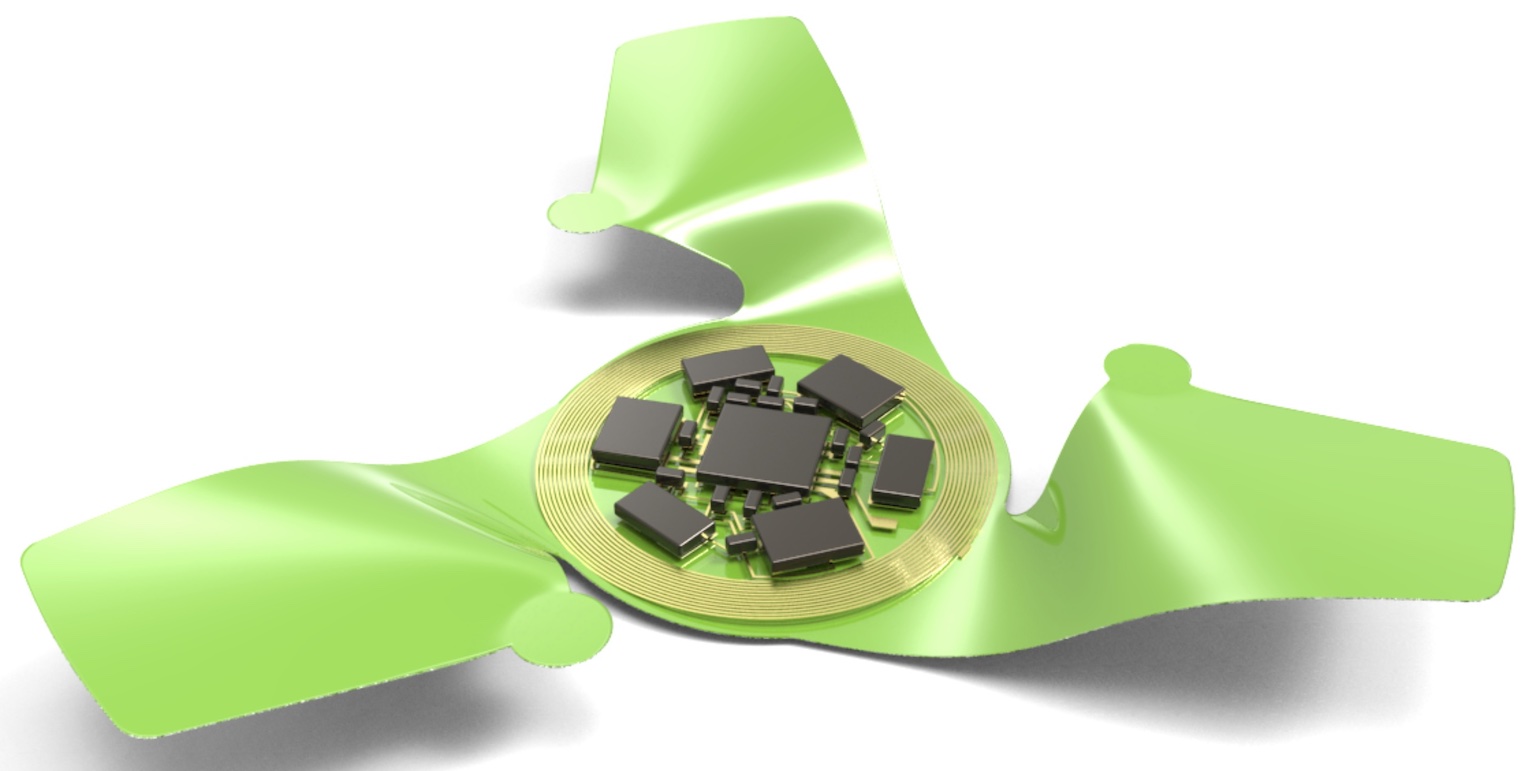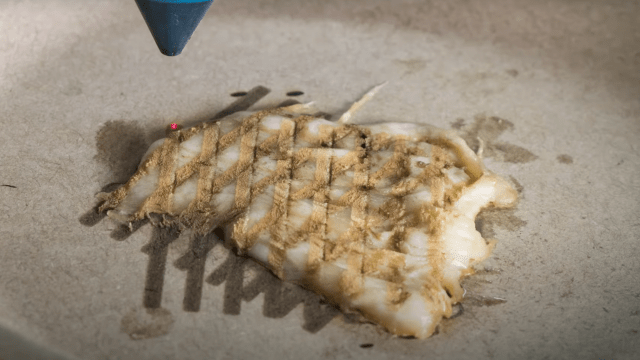Maple tree “helicopters” inspire flying microchips

- Maple trees produce tiny “helicopters” that disperse their seeds.
- Scientists ceased upon this design to build “flying microchips.”
- These devices could help monitor many things, from environmental conditions to biological or chemical agents.
Any child who grew up with maple trees knows the distinctive flight mechanism of their “helicopters.” Every year, the tree grows a multitude of tiny winged fliers, each a thick round seed with a delicate fan-like blade sprouting out. When the cargo is ripe, the assembly floats down from the tree in a slow spinning motion, reminiscent of a helicopter’s rotor. Caught on a breeze, this beautifully evolved mechanism can travel many yards, dispersing the seed.
A large team of engineers took nature’s design and created a wide range of tiny, man-made, mimic maple-copters to perform various tasks while in whirling free fall. In a study published in the journal Nature, the team describes how it built and tested these fliers, ranging from finger-sized to those that were nearly too tiny to see with the eye. They then mounted simple sensors and electronics on the copters to demonstrate how a passive flying platform can be useful.
Mimicking Mother Nature
As anyone who has made a paper airplane knows, the angles and bends in the wings make a huge difference in how well it flies. The team’s work began by creating a model for the fliers and predicting the stability, aerodynamic drag, and angular rotation rate of a design based on the one from Mother Nature. The goal was unusual: to maximize drag, rather than minimize it. Various configurations of blades and angles were modeled, and the best designs were built and tested.
The fliers were printed on 2D sheets of material and then bent into 3D shapes. The team set up a miniature vertical wind tunnel and shined lasers on their falling fliers. The reflected laser light revealed not only the motion of the fliers but the motion of tiny particles flowing across them, which provided information on aerodynamics. They recorded the flights, looking for designs that fell slowly and straight.

While some natural maple copters descend straight with spin, others tumble erratically or veer sideways. Still others float down with no spin whatsoever. These artificial copters displayed the same behavior. But the team was able to identify a “winning” configuration: a carefully curved flier with three wings — each with a pad — and a lowered circular center. With this champion design in hand, the team created batches of fliers of varying sizes — some so small that dozens could fit comfortably on a fingertip — to test different payloads.
What can you do with a flying microchip?
Their largest copter is roughly two inches across. It is composed of multiple layers, allowing the construction of a complex miniature electrical circuit in its central pad. The flier could be dropped in the high atmosphere and passively record levels of ultra-violet or other radiation. Once retrieved, the readout also could give indications of solar flux, pollutant concentration, and other atmospheric conditions. A more menacing design could carry an internet of things (IoT) chip to “support distributed surveillance.”
We think we’ve beaten biology.
Prof. John Rogers, Northwestern University
A smaller family of fliers focuses on lightweight approaches, such as “colorimetric” sensing. Their colorimetric copter changes color based on various conditions, such as pH — a flying litmus test strip. The color can then be recorded via camera, so this design requires no onboard electronics. Many other common biological or chemical tests that change colors — such as those for bacteria, drugs, iodine, or sugar — could potentially be adapted for flight.
A bigger picture
Work like this demonstrates a few broad conclusions beyond its specific focus. Nature has an incredible way of creating elegant solutions to solve complex problems. Sometimes, human engineers can borrow from — and even improve upon — these designs. As Prof. John Rogers said of his research, “We think we’ve beaten biology.”





